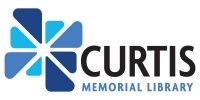
The article “Minimalism and Family History: Part II by Alison Taylor provided a very practical method for working my way through the paper files, asking myself the following questions as I sort:
Do I know what this is? If you don’t know what it is, toss it.
Do I care about this any more? Will my children ever care about it?
Would I want to include this in a book of my life stories someday? If it helps tell the story of your life or if it would be interesting to future generations, keep it for now.
Is it a duplicate? You only need one. Pick the best quality copy and pitch the rest.
Is it large and bulky? Snap a photo of your kids’ dog-eared second-grade science project and let it go.
Is it accessible online? This especially applies to old printed genealogical data, like pedigree charts from your great Aunt Martha circa 1973. If that data is stored on your computer, or now resides in Family Search or Ancestry, pitch it!
This next article was discovered in FamilyTree Magazine (What to Keep and What to Toss) and was short and simple. It provided three key headings for your sorting: Save, Skim then trash; Trash. It was a bit too simplistic for me but might be perfect for someone else.
Another good article came from the Family Curator blog who provides 7 questions to ask yourself to help decide what to keep and what to throw out. 3 “yes” answers says you should probably think carefully about putting that object in the “keep” pile.
- Do I have the resources to care for this?
- Is this the only keepsake from my ancestor?
- What is my relationship to the owner?
- Was this item saved as a family heirloom?
- How old is it?
- Is it valuable?
- Is it priceless to me or to our family?
Finally, I’ll share a few tips that I uncovered in my reading:
- If you have memories associated with a keepsake but don’t want to keep that item any longer, take a picture of it to remind you of your memories – and then let it go.
- When you are weeding/decluttering don’t stop and start to read documents in great detail. If you do, you will never finish your project. Just read enough to figure out what is in the document and how you are going to treat it.
- Remember that items don’t have magical properties, memories do — getting rid of something your loved one owned isn’t getting rid of that person
These articles have provided me with some very helpful guidance for my weeding project. I hope they do the same for you! Happy research!


Leave A Comment
You must be logged in to post a comment.